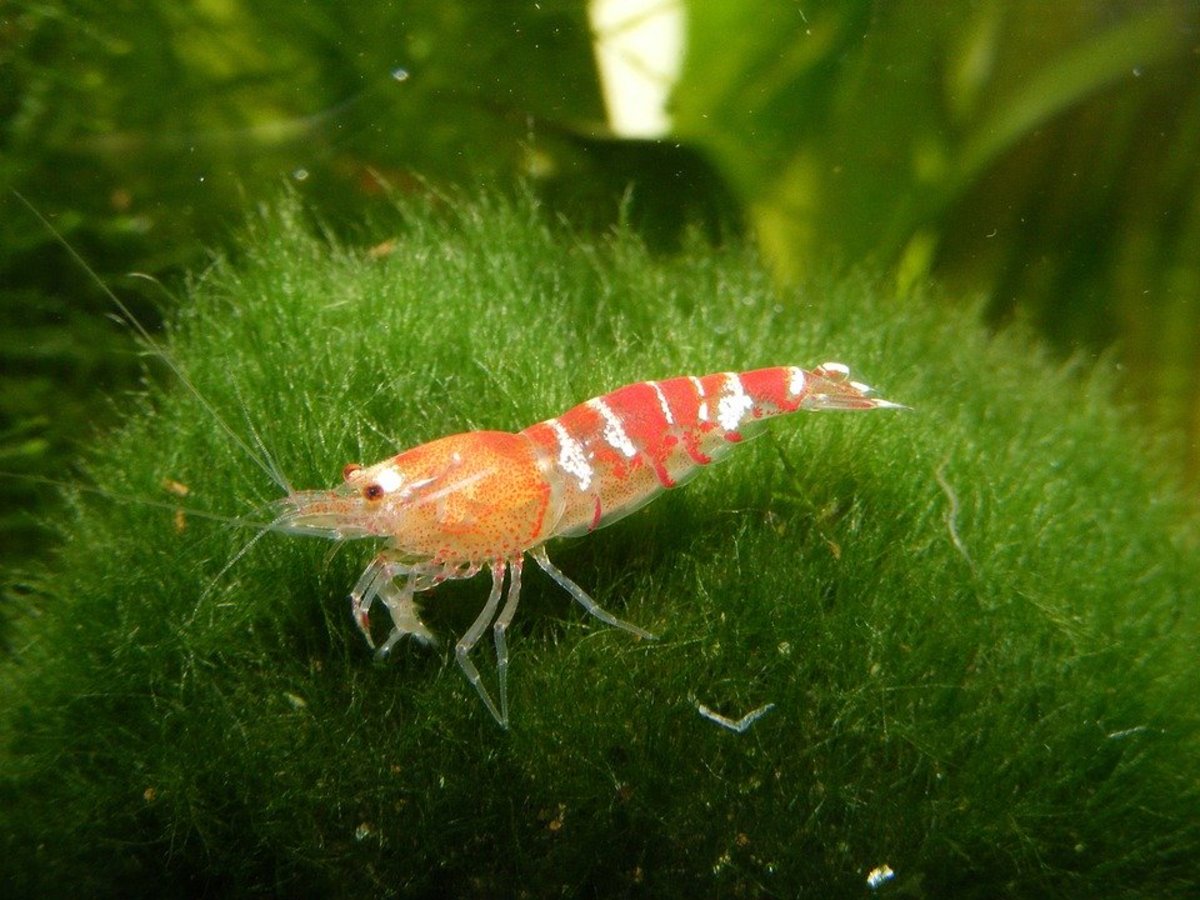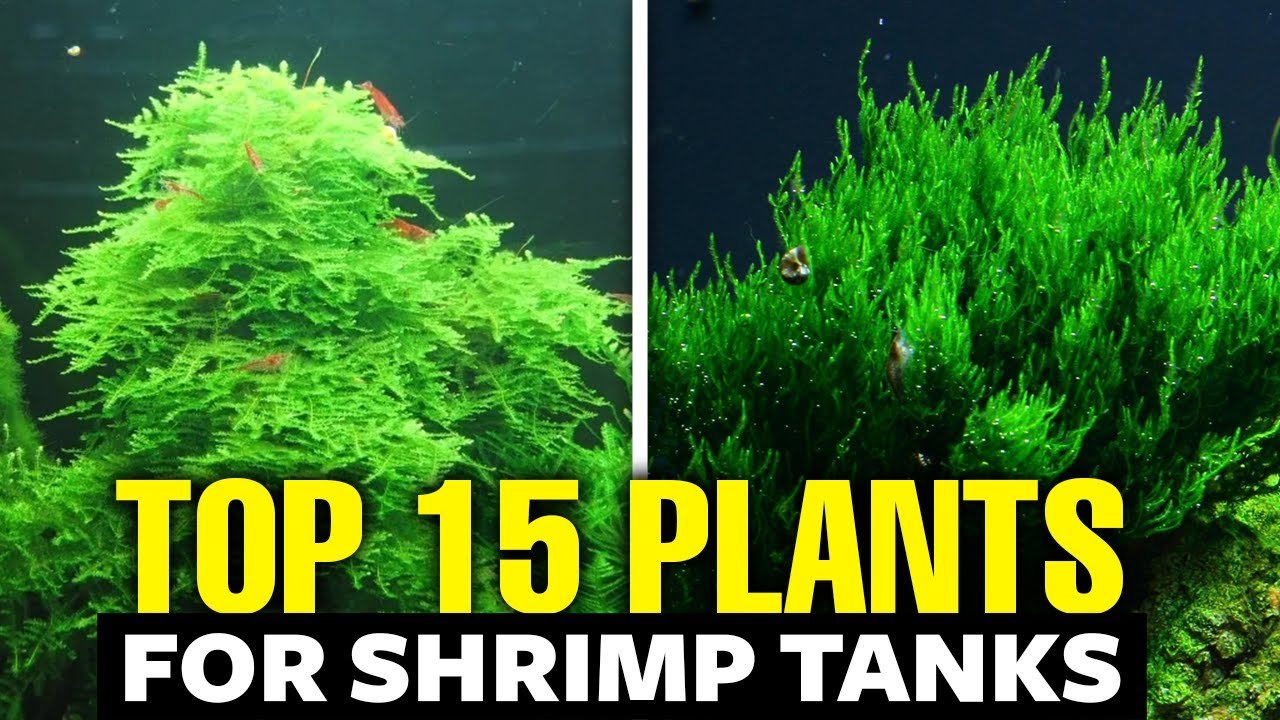Aquarium plants are vital for shrimp tanks. They provide shelter and food for shrimp.
Shrimp thrive in well-planted tanks. The right plants create a balanced ecosystem. They offer hiding spots and improve water quality. Live plants can make your shrimp healthier and happier. This guide will help you choose the best plants. It covers options that are easy to care for and beneficial for shrimp.
Understanding these plants can make a big difference in your aquarium. Let’s explore the best choices for your shrimp tank.

Credit: pethelpful.com
Introduction To Aquarium Plants For Shrimp
Adding plants to a shrimp aquarium can transform the tank into a thriving environment. Plants are essential for shrimp health and happiness. They provide cover, improve water quality, and add natural beauty.
Benefits Of Plants For Shrimp
Aquarium plants offer many benefits for shrimp. They help maintain water quality by absorbing toxins. Plants also produce oxygen, which shrimp need to breathe.
Plants create hiding spots for shrimp. This reduces stress and provides a safe place to molt. Shrimp also enjoy grazing on biofilm that grows on plant surfaces.
Live plants help mimic the shrimp’s natural habitat. This encourages natural behaviors and improves overall well-being. A healthy, active shrimp is a happy shrimp.
Choosing The Right Plants
Not all plants are suitable for shrimp tanks. Some plants need specific conditions to thrive. Choose plants that can survive in similar conditions as shrimp.
Mosses are great for shrimp tanks. Java moss and Christmas moss are popular choices. They provide excellent cover and grazing areas.
Floating plants like duckweed and water lettuce are also good options. They help control light levels and provide extra hiding spots.
Low-maintenance plants like Anubias and Java fern are ideal. They require little care and can thrive in various conditions. These plants are perfect for beginners.
Mosses
Aquarium mosses are perfect for shrimp tanks. They offer shelter, hideouts, and food sources. Mosses are easy to care for and add beauty to the tank. Let’s explore two popular moss types: Java Moss and Christmas Moss.
Java Moss
Java Moss is a versatile and hardy plant. It thrives in various water conditions. This makes it an excellent choice for beginners. Java Moss provides ample hiding spots for shrimp. It helps them feel safe and secure. It also offers a surface for biofilm growth. Biofilm is a natural food source for shrimp.
Java Moss is easy to attach to decorations and driftwood. It grows well under low light conditions. Regular trimming helps maintain its shape and prevents overgrowth. Here are some key benefits of Java Moss:
- Easy to maintain
- Provides hiding spots
- Supports biofilm growth
- Grows well in low light
Christmas Moss
Christmas Moss has a unique, festive appearance. Its branches resemble Christmas tree branches. This moss adds an attractive look to your aquarium. It offers dense coverage and many hiding spots for shrimp.
Christmas Moss prefers moderate lighting and a stable environment. It attaches easily to surfaces like rocks and wood. Regular trimming keeps it looking neat and prevents overgrowth. Here are some key benefits of Christmas Moss:
- Attractive appearance
- Dense coverage
- Provides hiding spots
- Easy to attach to surfaces
Both Java Moss and Christmas Moss are excellent choices for shrimp tanks. They create a natural habitat and enhance the tank’s beauty.
Floating Plants
Floating plants are a wonderful addition to any shrimp aquarium. They not only enhance the aesthetic appeal but also provide a natural habitat. Floating plants offer hiding spots and reduce light intensity, which is beneficial for shrimp. Below, we explore two popular floating plants: Duckweed and Frogbit.
Duckweed
Duckweed is a small, fast-growing floating plant. It has tiny, oval leaves and spreads quickly. This plant is excellent for providing cover and reducing nitrate levels in your tank.
- Light Requirement: Low to Medium
- Growth Rate: Fast
- Benefits: Provides cover, reduces nitrates, easy to maintain
Duckweed is ideal for shrimp tanks due to its rapid growth. It helps in maintaining water quality by absorbing excess nutrients. Additionally, it provides a natural shade, which is crucial for shrimp as they prefer dim lighting.
Frogbit
Frogbit is another popular floating plant for shrimp tanks. It has larger, round leaves that float on the water’s surface. Frogbit creates a beautiful green canopy and offers numerous benefits.
| Light Requirement | Medium to High |
|---|---|
| Growth Rate | Moderate |
| Benefits | Provides shade, reduces algae growth, enhances oxygenation |
Frogbit’s roots hang down into the water, offering additional hiding spots. This is especially beneficial for baby shrimp. The plant also helps in oxygenating the water and reducing algae growth, making it a great choice for any shrimp tank.

Credit: aquaticarts.com
Carpet Plants
Carpet plants create a lush green floor in an aquarium. Shrimp love these plants. They offer a great hiding place. They also provide a surface for biofilm growth. This biofilm is a food source for shrimp. Two popular carpet plants are Dwarf Hairgrass and Monte Carlo.
Dwarf Hairgrass
Dwarf Hairgrass is a popular carpet plant for shrimp tanks. It has thin, grass-like leaves. It grows fast and spreads quickly. It can cover the tank floor in no time. Shrimp love to hide in it. It helps them feel safe. Dwarf Hairgrass also catches food particles. This makes it easier for shrimp to find food. It needs moderate light and CO2 for best growth. Regular trimming keeps it healthy.
Monte Carlo
Monte Carlo is another great carpet plant. It has small, round leaves. These leaves form a dense carpet. Shrimp enjoy exploring this plant. It provides shelter and grazing areas. Monte Carlo grows well in moderate light. It does well with CO2 but can adapt without it. Frequent trimming keeps it from overgrowing. It also helps maintain a neat appearance. Monte Carlo is easy to plant. It roots quickly and spreads fast. This makes it ideal for beginners.
Stem Plants
Stem plants are great choices for shrimp tanks. They grow fast and provide ample hiding spots for your shrimp. These plants also help maintain water quality by absorbing excess nutrients. Let’s explore some of the best stem plants for shrimp tanks.
Water Wisteria
Water Wisteria is a popular choice among aquarists. It is easy to grow and adaptable. This plant thrives in various water conditions. Its lace-like leaves offer excellent cover for shrimp, making them feel safe.
- Light requirement: Moderate to high
- Growth rate: Fast
- Temperature: 70-82°F (21-28°C)
Water Wisteria can also be planted in the substrate or left floating. This versatility makes it a valuable addition to any shrimp tank.
Rotala Rotundifolia
Rotala Rotundifolia is another excellent stem plant for shrimp tanks. It is known for its beautiful red and green leaves. This plant adds color and vibrancy to your aquarium.
- Light requirement: Moderate to high
- Growth rate: Fast
- Temperature: 72-82°F (22-28°C)
Rotala Rotundifolia grows best in nutrient-rich substrates. Regular pruning is necessary to maintain its shape and promote new growth. This plant not only enhances the aesthetic appeal but also provides a great habitat for shrimp.
Anubias
Anubias plants are popular choices for shrimp tanks. They are hardy and easy to care for. These plants provide great hiding spots for shrimp. Their broad leaves offer a safe place for shrimp to rest. Anubias plants can thrive in various water conditions. They do not need much light. This makes them perfect for beginners.
Anubias Nana
Anubias Nana is a smaller variety of Anubias. Its compact size makes it perfect for small tanks. The leaves are thick and dark green. This plant grows slowly. It needs very little maintenance. Anubias Nana can be attached to rocks or driftwood. This adds a natural look to the tank. Shrimp love to hide and forage on its leaves. The plant helps keep the water clean by absorbing nutrients.
Anubias Barteri
Anubias Barteri is another great choice for shrimp tanks. It has larger leaves compared to Anubias Nana. The broad leaves provide ample hiding spaces for shrimp. This plant is also very hardy. It can survive in low light conditions. Anubias Barteri can be planted in the substrate or attached to decorations. Its roots help stabilize the tank environment. This plant is slow-growing and requires little care. Shrimp enjoy grazing on its leaves. The plant helps maintain water quality by absorbing waste.
Ferns
Ferns are a fantastic choice for shrimp tanks. These plants add a lush, green appearance and create an ideal habitat for shrimp. They offer hiding spots and surfaces for biofilm to grow, which shrimp love to graze on. Let’s explore two of the best ferns for shrimp aquariums.
Java Fern
Java Fern (Microsorum pteropus) is a popular choice for shrimp tanks. It’s easy to care for and thrives in various water conditions. This fern prefers low to moderate light and can grow in a wide range of temperatures.
- Light: Low to moderate
- Temperature: 68-82°F (20-28°C)
- pH: 6.0-7.5
Java Fern doesn’t require substrate planting. You can attach it to driftwood, rocks, or other decorations. Its broad leaves offer ample grazing surfaces for shrimp. They also provide excellent hiding spots for baby shrimp, ensuring their safety.
Bolbitis Fern
Bolbitis Fern (Bolbitis heudelotii) is another excellent option. This fern is also known as the African Water Fern. It is loved for its intricate, dark green leaves. Bolbitis Fern grows best in moderate light and slightly acidic water conditions.
- Light: Moderate
- Temperature: 72-82°F (22-28°C)
- pH: 6.0-7.0
Like Java Fern, Bolbitis Fern doesn’t need to be planted in substrate. Attach it to hardscape elements in your tank. This plant provides good cover and grazing areas for shrimp. It also adds a unique, natural look to your aquarium.

Credit: shrimpybusiness.com
Plant Care Tips
Caring for aquarium plants is essential to keeping your shrimp happy and healthy. Different plants have different needs. Proper care ensures they thrive. Below are some essential tips to help you.
Lighting Requirements
Aquarium plants need light to grow. A light source of 6 to 8 hours daily is ideal. Use LED or fluorescent lights. These types are efficient and provide the right spectrum. Avoid direct sunlight. It can cause algae growth.
Nutrient Needs
Plants require nutrients to stay healthy. Use a good quality substrate. It provides a base for the roots. Fertilizers are also important. Liquid and root tabs work well. Ensure the water has proper CO2 levels. This gas is vital for plant growth.
Frequently Asked Questions
What Are The Best Plants For Shrimp Tanks?
The best plants for shrimp tanks include Java Moss, Anubias, and Marimo Moss Balls. These plants provide hiding spots and help maintain water quality.
Why Do Shrimp Need Plants In Their Tank?
Shrimp need plants for hiding, breeding, and foraging. Plants also help maintain water quality by absorbing toxins and providing oxygen.
How Do Plants Benefit Shrimp Health?
Plants benefit shrimp health by providing natural habitats, reducing stress, and offering surfaces for biofilm growth. Biofilm is a food source for shrimp.
Can Shrimp Live Without Aquarium Plants?
Shrimp can live without aquarium plants, but they thrive better with plants. Plants improve water quality and offer essential hiding spots.
Conclusion
Choosing the right plants for your shrimp tank is crucial. Plants like Java Moss, Anubias, and Marimo Moss Balls are great options. They provide shelter and improve water quality. Healthy plants lead to happy shrimp. Remember to maintain proper lighting and water conditions.
Regular care will keep your plants and shrimp thriving. Experiment with different plants to find what works best. Enjoy the process and watch your shrimp flourish in their beautiful, planted aquarium.





